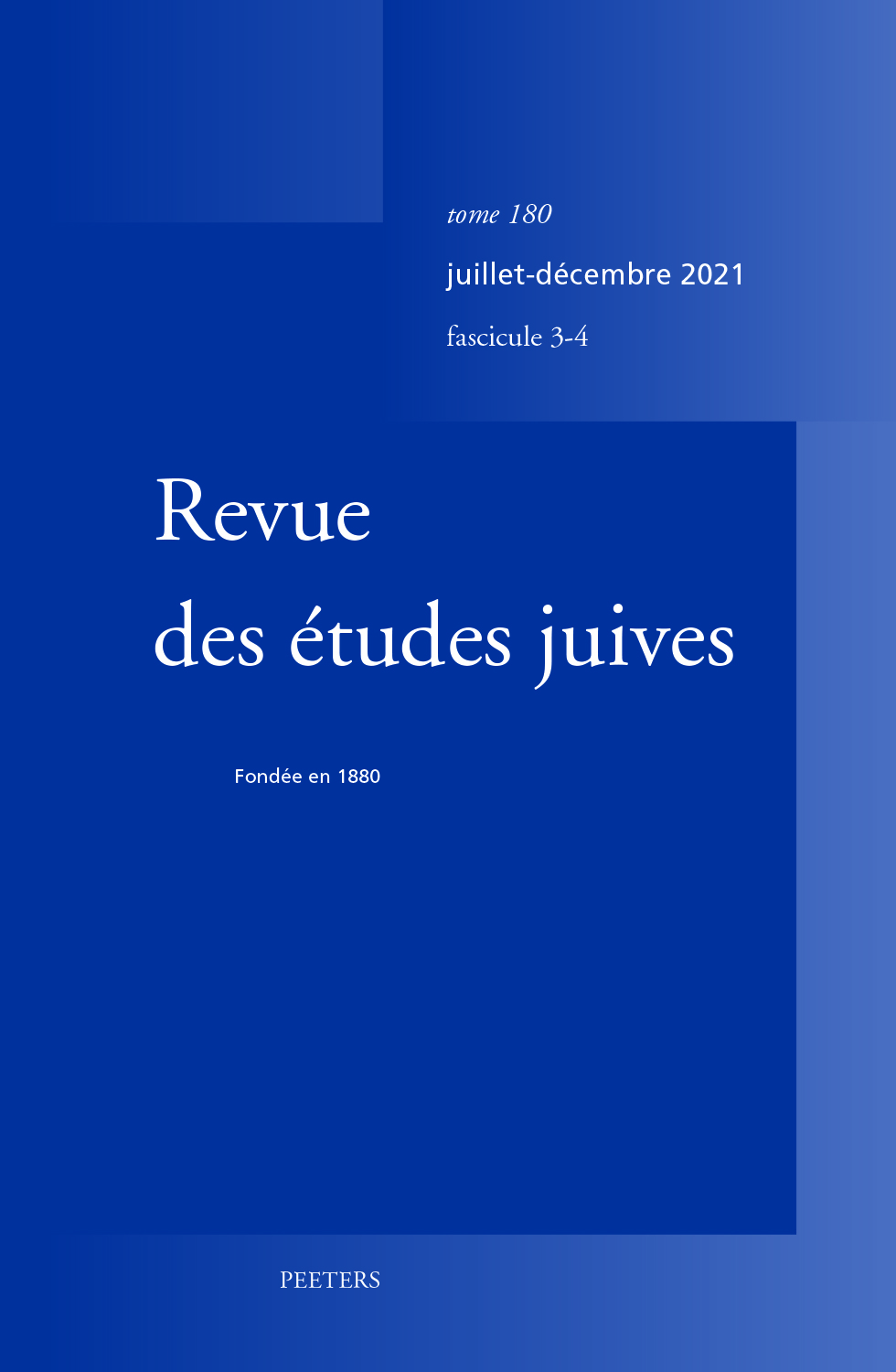next article in this issue  |

Preview first page |
Document Details : Title: Jésus adorateur d'une brique? Subtitle: B. Sanhedrin 107b: L'épisode talmudique du séjour de Yeshu en Égypte Author(s): MURCIA, Thierry Journal: Revue des Études Juives Volume: 170 Issue: 3-4 Date: juillet-décembre 2011 Pages: 369-398 DOI: 10.2143/REJ.170.3.2141799 Abstract : Cette étude présente une analyse de l’épisode talmudique rapporté en Sanhedrin 107b qui met en scène Jésus et son maître Yehoshua ben Peraḥiah, un Sage de la fin du IIe siècle av. J.-C. L’auteur de cet article retrace la généalogie du document et tente d’en distinguer les différents enjeux. Dans ce récit insolite, qui a pour cadre l’Égypte, on peut lire que Jésus, repoussé par son maître, «dressa une brique et se prosterna devant elle». Après avoir examiné les différentes hypothèses émises jusqu’ici, l’auteur propose de voir dans la formule Jésus «dressa une brique», zaqaf lebheinta, une allusion à la staurolâtrie ou à l’iconodulie pratiquées au VIIe ou au VIIIe siècle par les chrétiens d’Orient. L’auteur établit donc que l’anecdote est une fiction de composition tardive, qui appartient à la dernière couche rédactionnelle du Talmud. This study presents an analysis of the talmudic story related in Sanhedrin 107b featuring Jesus and his teacher Yehoshua ben Peraḥiah, a Sage who lived at the end of the second half of the second century BC. I draw attention to the genealogy of the document and try to reveal its different purposes. In this puzzling story which takes place in Egypt, we read that Jesus, rejected by his teacher, 'set up a brick and worshipped it'. I examine the various assumptions which have already been proposed by several scholars to explain the formula according to which Jesus 'set up a brick', zaqaf lebheinta. I suggest to see there an allusion to staurolatry or to iconoduly which were practised by Christians in the Orient in the seventh or eighth century AD. I state that this anecdotal story is a fiction of late production which belongs to the last written stratum of the Talmud. |
|


